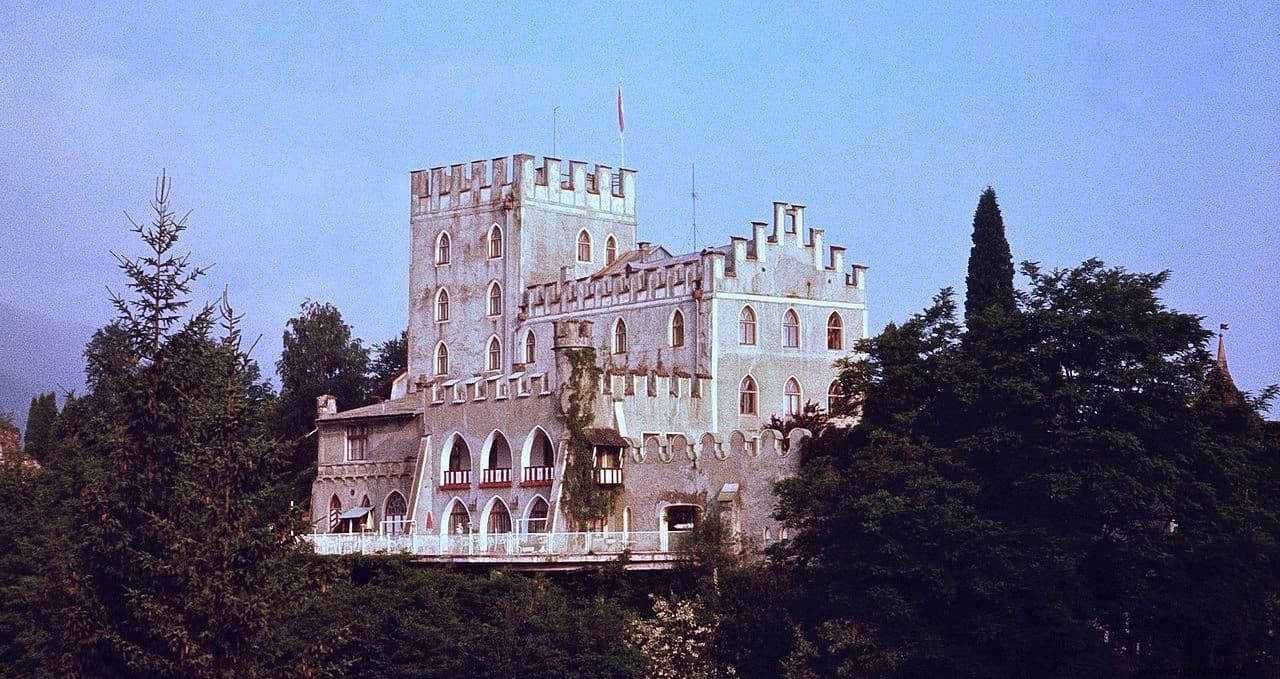We recently saw how the Austrian army has the honor of being the only one to have fought against itself. It seems that Austria has a certain magnet for unusual military events, because it was in the Austrian town of Itter, in Tyrol, that one of the strangest battles of the entire Second World War took place.
It was fought on May 5, 1945, just five days after Hitler committed suicide in his Berlin bunker, and two days before the German High Command unconditionally surrendered in Reims, France (however, some remnants of the Central Army Alemán would continue to resist until May 11 and 12).
On a hill near Itter was the medieval castle of the same name. And it would be in the defense of this castle that for the first (and probably only) time in its history the United States Army found itself defending a medieval castle. Not only that. To do this, he had the help of French prisoners, members of the Austrian resistance and what is more strange, German soldiers of the Wehrmacht.

On the North American side, the 23rd Armored Battalion of the 12th Division under the command of Lieutenant John C. Lee Jr. participated. The 14 prisoners were personalities, politicians, members of the resistance, trade unionists and even athletes, imprisoned there by the Nazis after the invasion. from France. There were former prime ministers Edouard Daladier and Paul Reynaud, Charles de Gaulle's older sister, and tennis player Jean Borotra, among others. Anti-Nazi soldiers from the German army joined in their aid (who, possibly seeing what was coming, decided to change sides).
Who were they fighting then? Well, against none other than the 17th Panzer Grenadier Division of the Waffen-SS. The course of events looks like something out of a Hollywood movie.

It all started on May 2, when the last commander of Dachau, Eduard Weiter, committed suicide in the castle. The next day Zvonimir Cuckovic, one of the prisoners in the castle, a member of the Yugoslav communist resistance, manages to escape with the pretense of carrying a message from the prison commander (probably that was the case in reality). With him he carried a letter written in English that he was to deliver to the first American he encountered. He is heading towards Innsbruck, which is about 40 miles away. That same afternoon he reaches the outskirts of the city where he meets the advance guard of the US 103rd Infantry Division, and informs them of the existence of the castle and the prisoners.
On May 4 and seeing that Cuckovic does not return, the prison commander Sebastian Wimmer leaves the castle followed by his SS men. The prisoners take control and the weapons left behind by the Nazis. Czech prisoner Andreas Krobot manages to reach the nearby town of Wörgl, recently abandoned by the Wehrmacht but reoccupied by the SS, and contacts the Austrian resistance. They take him to see Major Josef Gangl , commander of what remains of a Wehrmacht unit that, disobeying orders to withdraw, has joined the resistance.

Gangl and his men are dedicated to defending Austrians from SS reprisals, street by street. He also manages to reach the small unit of 4 Sherman tanks, from the 23rd Armored Battalion commanded by Captain Lee which is located in Kufstein, about 13 kilometers to the north, with a large white flag for help.
Lee gets permission from headquarters to go on a rescue mission to aid Gangl. He does it with only 14 men and a tank in addition to Gangl and his ten German artillerymen. Halfway there they confront a group of SS troops and defeat them.
Once in the castle they find that the French have organized the defense led by a Waffen-SS officer who has stayed behind to help them. Lee places the tank on him Besotten Jenny blocking the main entrance, and his men in defensive positions. Although he orders the French prisoners to hide, they join the defense. On the morning of May 5, the Waffen-SS attack arrives. with a force of between 100 and 150 men (the defense consisted of 25 soldiers plus the French prisoners).
By late afternoon things were not going too well for the defenders, who had seen the SS destroy the tank. Fortunately, at 4 in the afternoon the reinforcements of the 142nd Infantry Regiment arrived. , which managed to reduce the attackers and take more than 100 Nazi prisoners.
Gangl was killed during the combat hit by a sniper. He was named a national hero in Austria and they even dedicated a street to him in Wörgl.
As we said at the beginning, this battle is considered the strangest of the entire Second World War , since it is the only one in which allied and german soldiers fought together against a common enemy. Perhaps it was the inspiration for the famous movie La Fortaleza directed in 1969 by Sydney Pollack.
